|
The World War II Memorial honors the sacrifice and the determination of a nation and a generation during the middle part of the twentieth century. Located along the cermonial entrance, one finds 24 bronze bas-reliefs created by sculptor Ray Kaskey. His work depicts both home front and battle scenes highlighting that sacrifice and determination. The reliefs appear along the north side of the ceremonial entrance and illustrate images associated with the Atlantic Theater of the war.
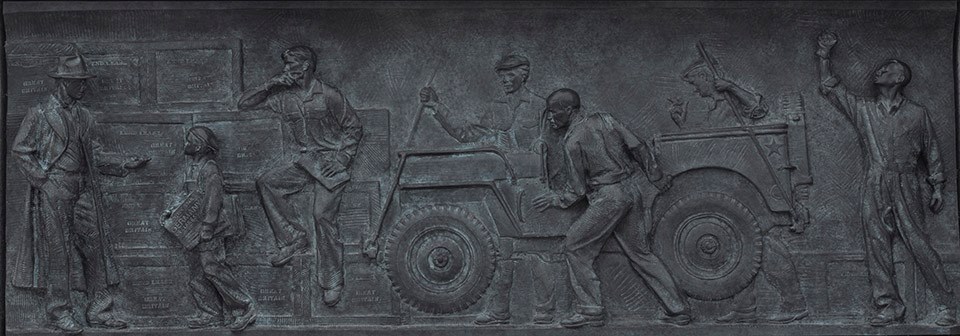
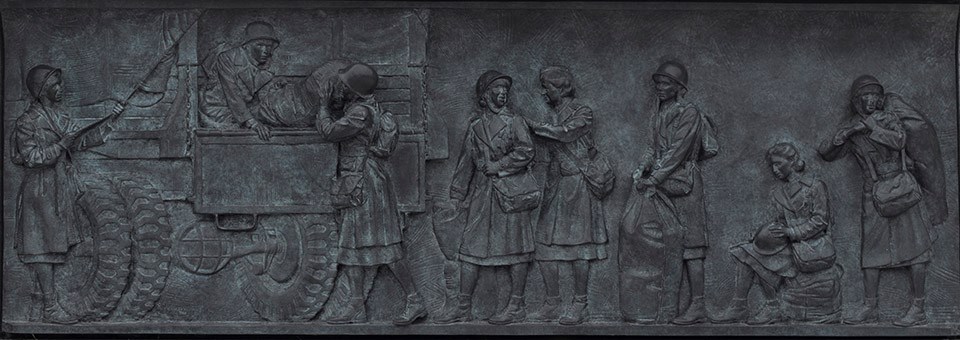
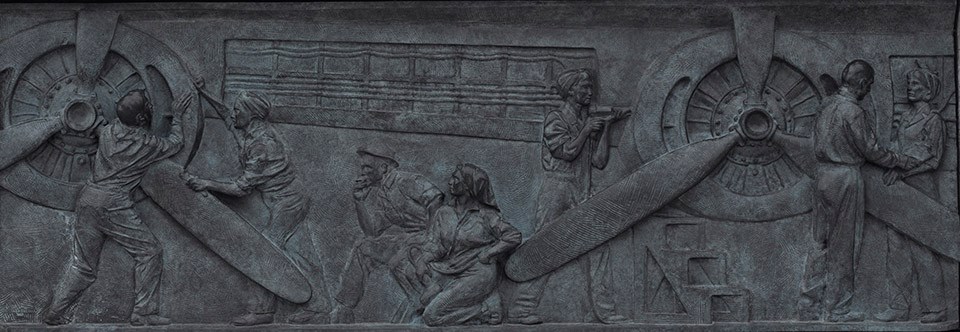
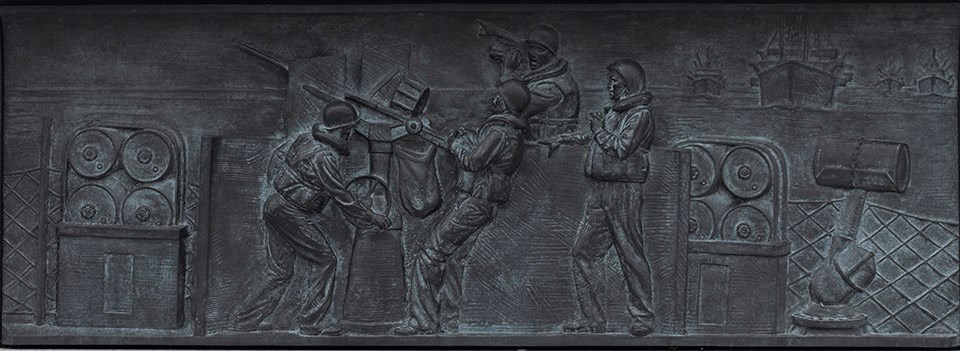
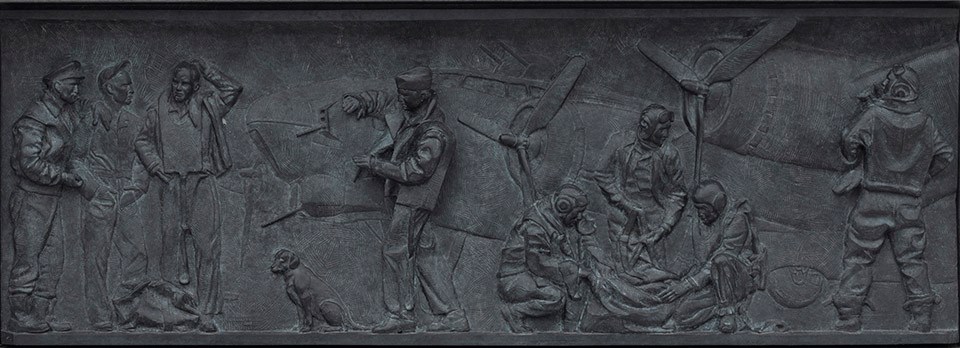

Paratroopers Fighter, bomber, and transport aircraft each became a necessity to the Allied war effort. Transport aircraft, especially, introduced a new method of delivering troops to the front line. They dropped highly skilled airborne troops, called paratroopers, behind enemy lines at places such as Sicily, Normandy, Holland, and Germany. 
Normandy Beach Landing After nearly two years of attacking German held positions in France with bomber aircraft, the Allies launched the "D-Day" invasion on June 6, 1944. The joint Operation, codename "Overlord," landed allied troops on the northern shores of France. Landing craft successfully delivered troops to the Normandy shores to a most galling German fire and heavily laden with beach obstacles. 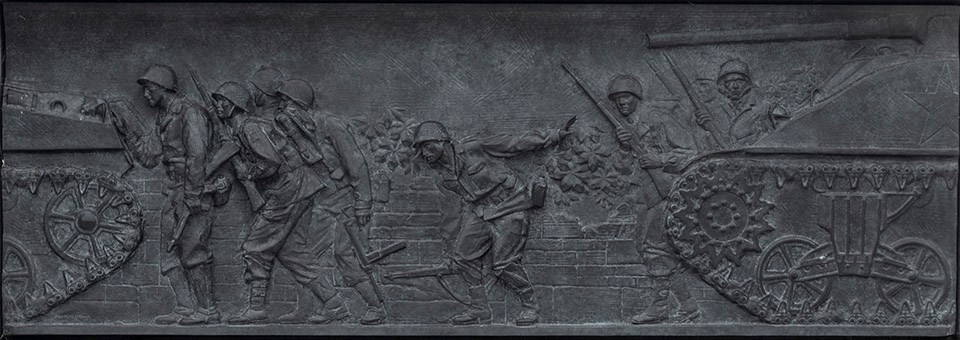
Tanks in Combat Following the invasion of Normandy, allied and American troops launched operation "Cobra," breaking through German defenses. Tanks aided the infantrymen in the field and played an integral part in the "break-out" into France. The American M-4 "Sherman," inferior to many German tanks in armor and armament, proved to be highly successful due to its large production numbers. 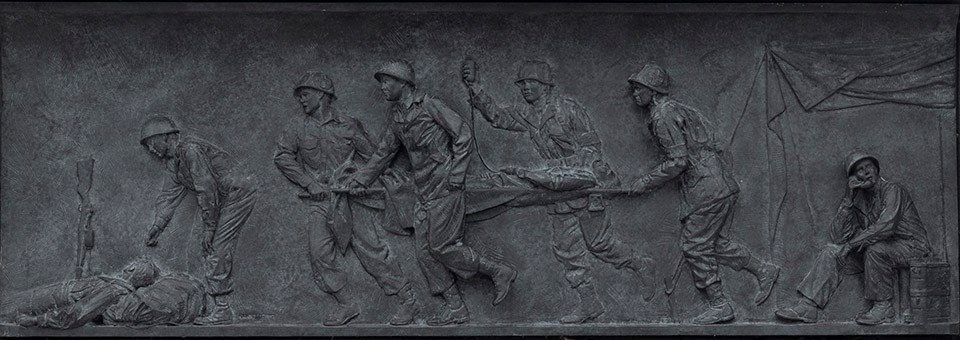
Medics in the Field During the American Civil War minor battlefield wounds often proved fatal. By the Second World War the survival rate of combat wounded improved dramatically due to advances in medicine and the use of Army Medics and Naval Corpsmen. Medics and Corpsmen often treated wounded under fire in the field, making them some of the bravest on the battlefield. 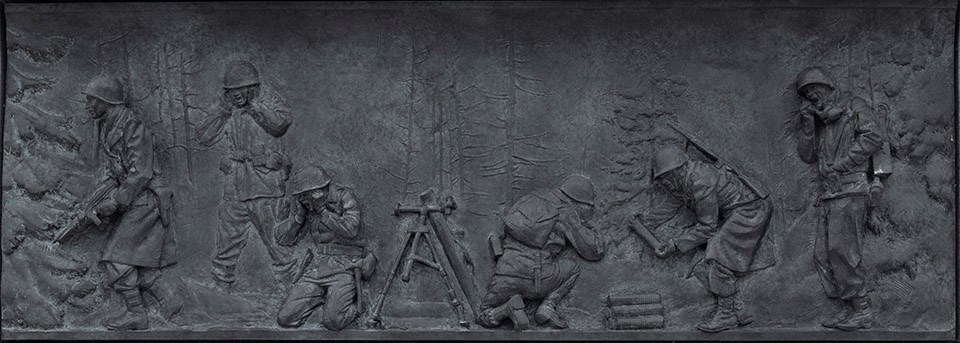
Battle of the Bulge By mid December-1944 the allies, standing on the doorstep of Germany, believed that Hitler's army had all but lost. That belief changed when Hitler launched a massive offensive into Belgium breaking the allied line creating a large "bulge". Dogged resistance by American units surrounded at key crossroad towns, along with German fuel shortages brought about the demise of Hitler's December offensive. 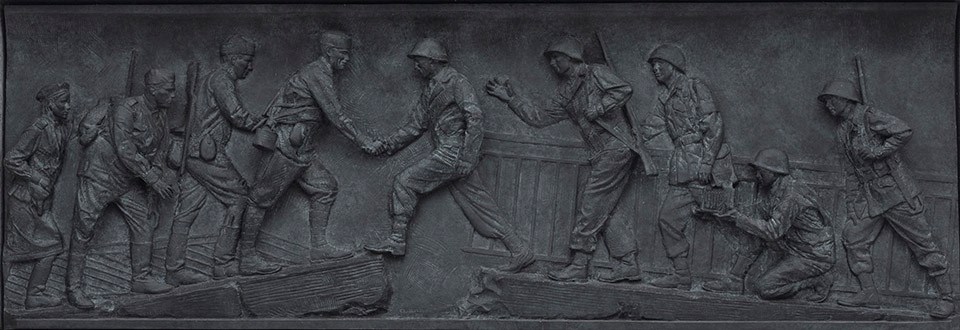
Russians Meet Americans at the Elbe Following the Battle of the Bulge and a winter of hard fighting, the allies plowed into Germany on all sides. On April 25, 1945, American and Russian armies finally met at the Elbe River. American troops there discovered how hard the war had been for Russia, finding women fighting in combat alongside men. The allied victory over Germany arrived twelve days later with its unconditional surrender. |
Last updated: May 21, 2020
